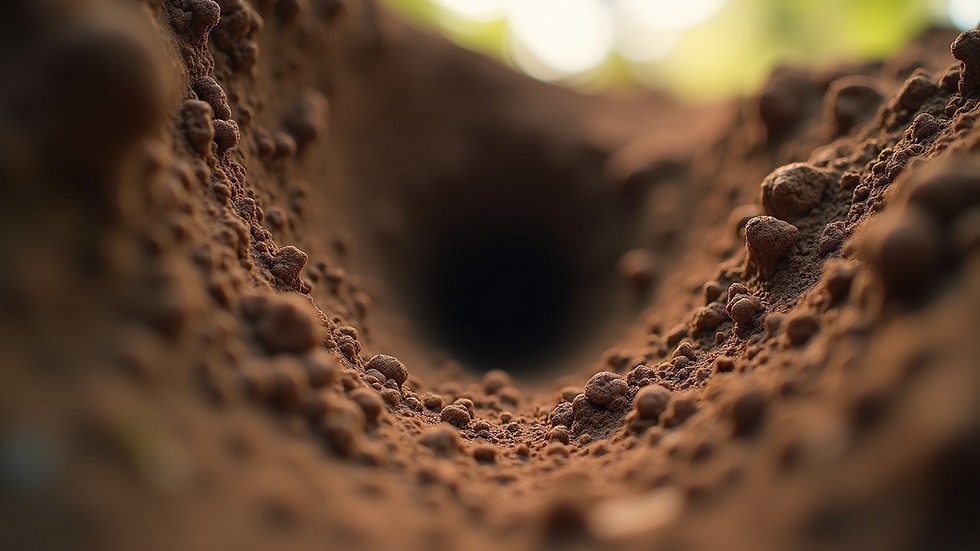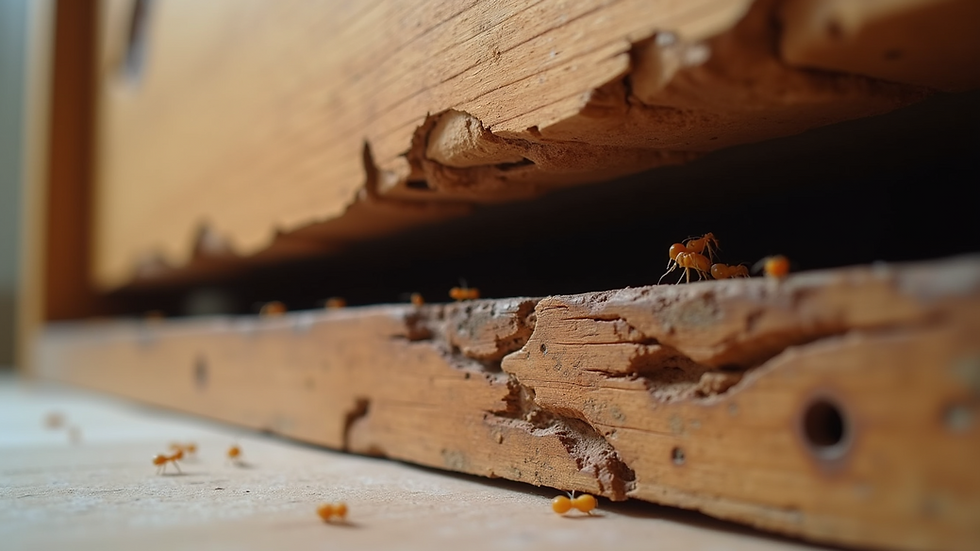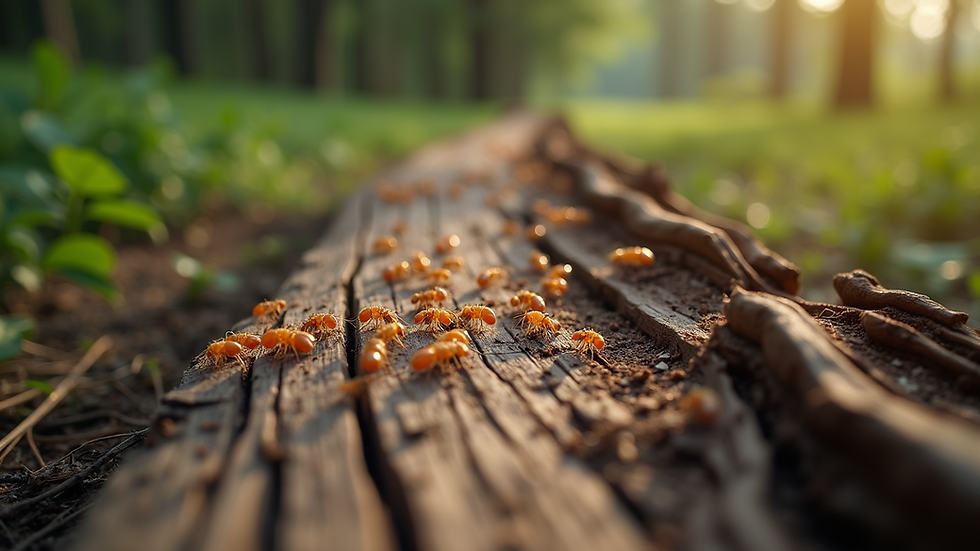Understanding the Differences Between Subterranean, Drywood, and Dampwood Termites
- AUNG HEIN
- Sep 19
- 4 min read
Termites are commonly called the "silent destroyers" because they can cause serious damage to homes and buildings without obvious signs. An estimated 600,000 homes in the U.S. are affected by termite damage each year, leading to repair costs of around $5 billion. Among the many types of termites, subterranean, drywood, and dampwood termites are the three most prevalent. Each type has its own unique characteristics, habitats, and behaviors. This post will explore the differences among these termites, allowing you to identify and manage them effectively.
What Are Subterranean Termites?
Subterranean termites are the most common and destructive type of termites in the United States. They live underground in colonies that can contain up to 2 million members. These termites build expansive tunnel systems to locate food, primarily wood.
Subterranean termites thrive in moist environments, often near water sources or areas with high humidity. They can enter buildings through cracks in foundations or by tunneling through the soil.

Their colonies are structured with a caste system that includes worker termites, soldiers, and reproductive members. Workers forage for food, while soldiers protect the colony from threats.
Characteristics of Subterranean Termites
Subterranean termites are typically light-colored, ranging from white to light brown. They possess long, straight antennae and a broad waist. One key feature of these termites is their ability to create mud tubes, which provide a moist environment and protect them from predators.
These mud tubes can often be seen along your foundation or walls. If you spot these tubes, it’s a clear indication of a subterranean termite infestation.
What Are Drywood Termites?
Drywood termites primarily infest dry wood, as their name suggests. Unlike subterranean termites, they do not depend on contact with soil or moisture to survive. They can thrive in furniture, wooden beams, and even structural elements of your home.
Drywood termites usually enter homes through small cracks in wood or other entry points. Once inside, their colonies can grow to several thousand individuals.

These termites are more common in warmer climates and can cause significant damage if not dealt with promptly. In one study, 30% of homes in certain warm regions showed signs of drywood termite activity.
Characteristics of Drywood Termites
Drywood termites are larger than subterranean termites and typically have a reddish-brown color with a rounded head. A notable characteristic is their production of frass, a droppings that looks like small pellets.
Finding these pellets around wooden structures or furniture can be a sign of a drywood termite infestation. Unlike subterranean termites, drywood termites do not create mud tubes, making their presence less obvious until extensive damage has already occurred.
What Are Dampwood Termites?
Dampwood termites are less common than their subterranean and drywood counterparts, primarily thriving in wet or decaying wood. They prefer environments with high moisture levels, such as near leaky roofs and plumbing issues.
Dampwood termites do not require contact with the soil for survival, yet they need a moist environment. Their feeding habits are typically less threatening to well-maintained structures.

Characteristics of Dampwood Termites
Dampwood termites are generally larger than both subterranean and drywood termites, displaying a dark brown or black body. They lack a caste system, so all colony members contribute to foraging and nest protection.
With their preference for moist wood, dampwood termites are often found in environments with significant water damage or decay. This makes them less of a concern in areas that are regularly maintained.
Identifying Termite Infestations
Recognizing termite infestations early is crucial in preventing severe damage. Look for these signs:
Subterranean Termites: Mud tubes along foundations, hollow-sounding wood, or discarded wings near windows and doors are indicators of their presence.
Drywood Termites: Frass pellets accumulating under furniture or structures and small holes in the wood where they entered signal an infestation.
Dampwood Termites: Signs of moisture damage, like sagging wood or peeling paint, along with damp, decaying wood warrant close inspection for termite activity.
Tips for Prevention and Control
Preventing termite infestations requires a proactive approach. Here are some effective strategies:
Lower Moisture Levels: Repair any leaks and ensure proper drainage around your property.
Seal Cracks and Openings: Inspect for cracks in the foundation, walls, and around windows. Seal any openings to keep termites out.
Schedule Regular Inspections: Having a pest control professional conduct inspections can help identify potential infestations early.
Remove Wood Debris: Keep your yard clean and clear of wood debris, which can attract termites.
Safeguard Your Home from Termites
Understanding the distinctions between subterranean, drywood, and dampwood termites is vital for effective pest management. Each type has unique features and behaviors that can aid in identifying and addressing infestations before they lead to significant damage.
By being vigilant and proactive, you can protect your home from these destructive pests. If you suspect a termite infestation, consider contacting a pest control professional for assistance. Early detection is key to minimizing damage and keeping your home safe.




Comments